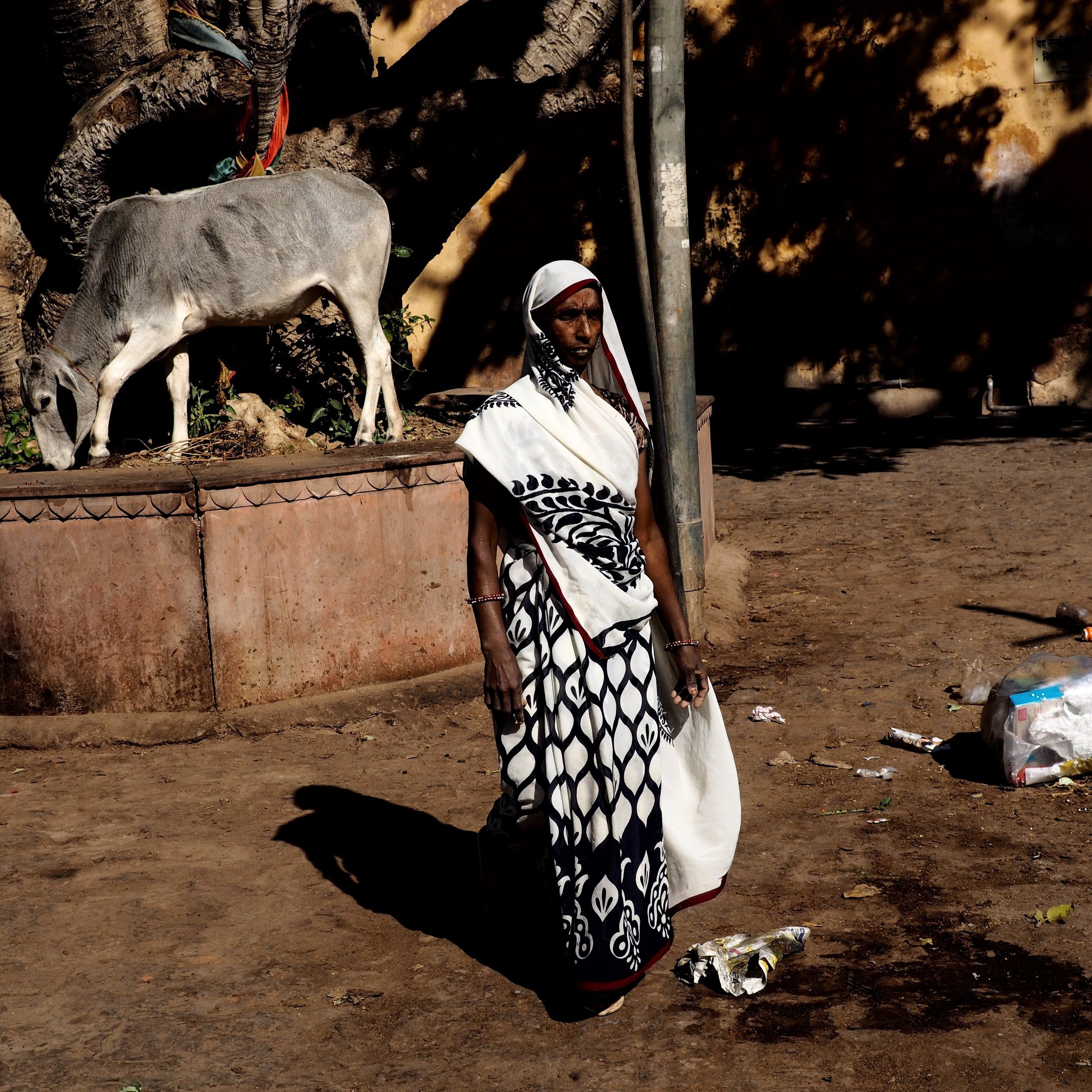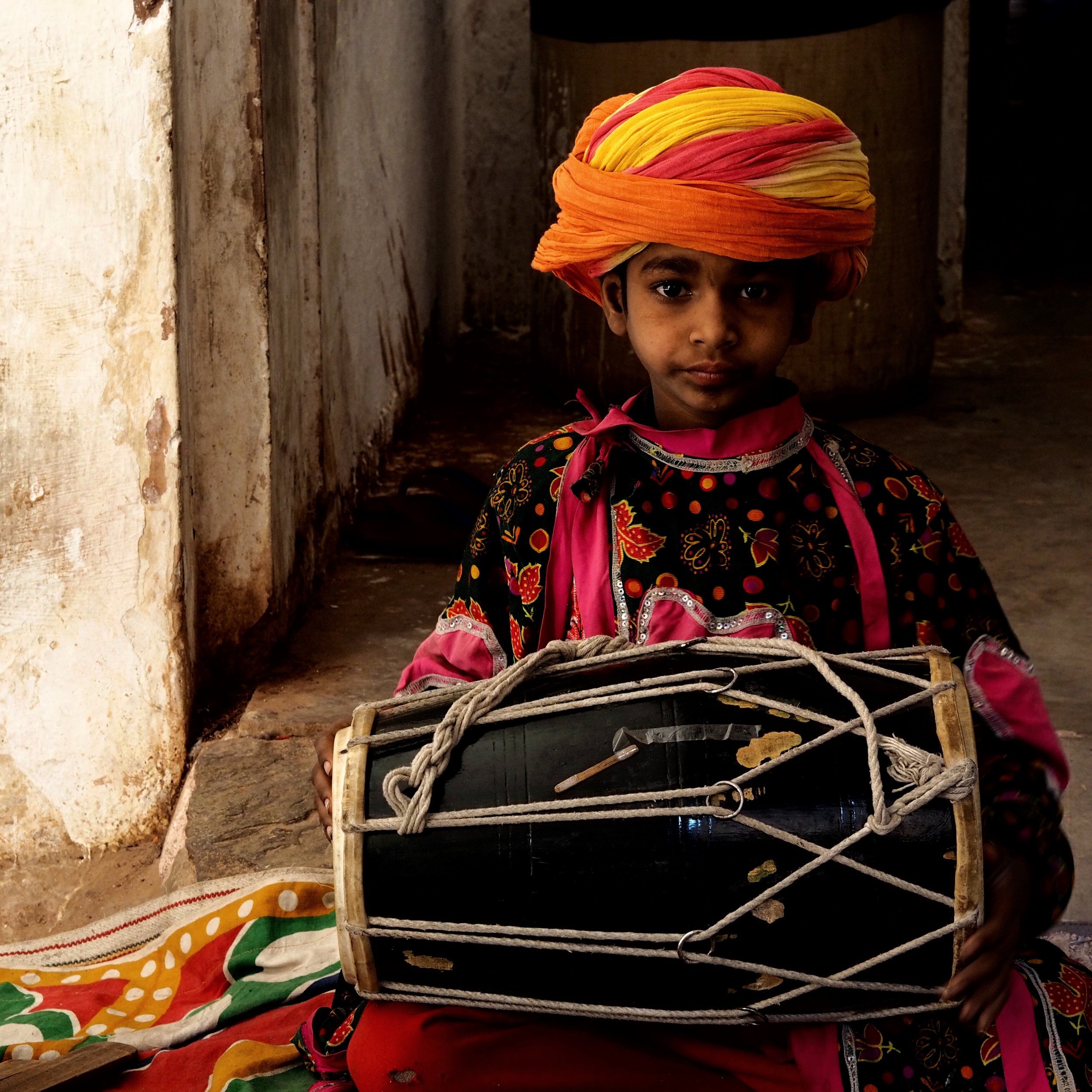Rajasthan: Eat Like a Rajput
Visiting India is a journey into the food and culture of the land of spices. My plane landed in the capital of India, Delhi. From there, my journey took me through the Northern Indian state of Rajasthan, bordering Pakistan. It’s a state known for sandy deserts, traditional multi-coloured fabrics, folk arts and culture, ancient traditions, and, most importantly, its royal historic palaces and forts. Today, these palaces and forts are reminders of the many kingdoms that over time ruled the state and have now become major tourist attractions. I was there to see family, travel to new cities, and announce my sister’s pregnancy. But there was one thing that was constantly on my mind: food.
Over the course of five days, we covered three cities in Rajasthan: Jaipur, Udaipur and Ajmer. Each city is dotted by palaces and forts built over time by the many kingdoms. Regardless of the number of kings and queens that ruled, there was one thing that always stayed constant and that was what they ate. Due to the scarcity of water in most parts of Rajasthan, traditional ‘Rajasthani’ cuisine also known as ‘Marwari’ cuisine revolves around the lasting plants of the desert.
On a journey to get an “authentic” experience of Rajasthan, my family rented out a mini-van and a driver. (Note: the size of a mini-van in India is comparable to almost a small SUV here in Canada). The five of us: my mom, dad, sister, brother-in-law and I squeezed into a tiny van and began our journey at 7:00am the next morning after my arrival in Delhi.
If there’s one thing that I learned during my journey through Rajasthan it’s that the food was always rich and spicy. By rich I mean dishes cooked in mounds of ghee (clarified Indian butter). Ghee is a staple in Indian diets. Much like hot sauce here, we put that shit on everything. It was a good balance to the skyrocketing spice levels in their cuisine, which I later found out was used for preservation purposes. Due to the scarcity of water, the people of Rajasthan have learned to cook dishes with milk, buttermilk or yogurt instead. This makes their curries creamy and velvety. The lack of vegetable growth in the desert means that they rely heavily on dry ingredients such as chickpeas and millet flour. Two of my favorite dishes in the region were made with a combination of both.
In a country like India, where every region cooks up an extravagant menu, the best way to explore any regional cuisine would be to settle for a thali. A thali, in simple terms, is a round platter consisting of several different dishes, each with its own bowl that goes around the platter. In the centre, you have your carbs such as roti or rice. It’s safe to say that the family ate one too many thalis during this trip.
Our first, most memorable traditional thali experience was in Jaipur at Chokhi Dhani. Chokhi Dhani is a traditional rural Rajasthani mud village built to showcase local arts and culture while embarking upon a traditional Marwari experience.
Upon arrival, two local women dressed in Rajasthani clothing welcomed us by a traditional Hindu ‘teeka’ ceremony. A teeka is a mark created with red powder that is mixed with water and then placed on your forehead with your thumb. We typically perform this ceremony as a mark of honour to welcome guests. At this point, we take off our shoes as a sign of respect while entering the village. We were given a glass of lassi prior to grabbing a seat at the table to begin our feast. A lassi is a traditional yogurt-based drink and this specific one was more salty than sweet to get our appetites going for the feast to come.
Each individual had his or her own table and chair, though the ‘table’ was closer to a footstool, and the ‘chair’ was a long cushion placed on a floor made of compressed sand. It doesn’t get any more Rajasthani than that! Like any desert, it’s hot during the days and cool during the nights. Lucky for us, we grabbed a seat right by the fireplace to warm us up.
To begin indulging in a decadent feast to come, we crossed our legs and tucked them underneath our ‘table’. On the table there was one giant plate made of dried banana leaves, five bowls, and no utensils. Eating with your hands is a part of Indian culture. There’s no better feeling than scooping food into your mouth with your own hands. As a matter of fact, eating with utensils is considered disrespectful. There is skill and manners involved in using your hands. Proper etiquette dictates the use of only your fingertips to pick up the food, leaving the palm dry (as much as possible).
Like any thali, you have the choice of either vegetarian or non-vegetarian. Of course, I wasn’t going to miss the opportunity to try some local meat so I opted for the non-vegetarian thali. Local men dressed in traditional outfits greeted us and began filling our plates and bowls with different curries, breads, etc. Once service begins, until you say NO, you will continue to get fed. This experience is similar to a buffet, except in this case, the food comes to you rather than you having to go get it yourself. This is what you call the ultimate royal treatment, similar to how the Rajputs and Mughals ate back in the day.
What was on my Thali?
Bowl #1: Laal Maas (Red Meat)
This dish is fit for Rajasthani royalty and ranks high on the spice-o-meter. It is a speciality of this region and individuals travel from all over to try this curry. It may burn your taste buds slightly but it’s totally worth it. After a couple of bites, you become immune to the spice! This non-vegetarian entrée is made of fresh goat (usually cut the day-of) marinated in ginger, garlic, and yogurt, then cooked in ghee with fresh, fiery, hot red chilli. This is where the dish gets its distinct red colour. Once cooked, you’re left with a creamy red curry with pieces of tender goat and a layer of ghee on top. When dipped with a roti made of black millet flour, ‘bajre ki roti’, it’s pure perfection. Bajre ki roti is much like regular roti but denser and with a slightly bitter taste. Don’t be surprised if your fingers are covered in a layer of ghee.
Bowl #2: Gatte Ki Sabzi (Gram-Flour Dumplings)
Since there is a lack of vegetables grown in Rajasthan, the locals came up with this substitute. What is ‘Gatte’? They are miniature deep-fried gram flour dumplings. Like every Rajasthani curry, it too has a similar base to the Laal Maas, minus the red chilis. Once fried, they are mixed into a yogurt based curry comprised of mild spices such as turmeric, coriander and mint. Cooked slowly over an open fire, this curry offset the heat on my palette from the Laal Maas.
Bowl #3: Safed Maas (White Meat)
Complete opposite of Laal Maas, this curry is another speciality of Rajasthan. For those looking for a less fiery alternative, safed maas is creamy, white, and mild. Similar to Laal Maas, fresh red chilis were replaced with mild, yet bold, spices such as cardamom, cloves and cinnamon. The curry gets its distinct white colour from a combination of cashew, almond and milk solids. It is finished with fresh rosewater. This was my favourite bowl out of everything on my plate! I’m a sucker for creamy Indian curries and the combination of all the spices hit the spot.
Bowl #4: Kale Channa Ki Kadhi (Black Chickpea Curry)
To balance out the meat curries, this black chickpea curry acted as a palette cleanser. Combining the textures of crunchy black chickpeas to a creamy yogurt curry, kale channa ki kadhi reminded me of my childhood. My mom used to make a rendition of this minus the yogurt base. She used red onions, ginger, garlic, mustard seeds, cumin seeds, red chili and curry leaves instead. The flavour notes of this were mild with a slight smokey kick at the end from roasted curry leaves. After the safed maas, this was my second favourite dish.
Bowl #5: Daal Baati Churma (Mixed-Lentil Dal)
Don’t let the thought of mixed-lentil dal fool you into thinking this is a savoury dish. This, in fact, was dessert and a staple in the Rajasthani diet. Baati is a ball made of nothing but semolina and ghee, served with a hot mixed-lentil dal. Churma ties the three together. It is made of ground bread mixed with melted ghee and the Indian version of refined sugar: jaggery. When combined together, it’s the yin-yang of sweet and savoury dessert. The baati is chewy, the dal is plain, and the churma is coarse with a slight crunch to the bite. It was a hit within the family. We weren’t shy to ask for a second round of dessert!
The rest of the platter consisted of several Rajasthani breads, rice and accompaniments such as pickles and fresh cut vegetables. This time, it was fresh cut cabbage and carrot, similar to a slaw.
The meal ended with the staff pouring room-temperature water over our plate to wash our hands. Just like that, our plates were folded in half and cleared, and a new set was being placed for the next guests.
After an hour and a half of sitting in a crossed leg position under my tiny table and filling my belly with rich Rajasthani food, it was time to get up. I’ve never struggled this much to get up before. In their culture, it’s considered a sign of wealth; only the wealthy were fed this much.
As we gathered our belongings, slipped on our shoes and began walking out I mentally crossed off one thing off my India bucket list: eat like a rajput, a Rajasthan king.
Words and photos by Abhishek Dekate.





